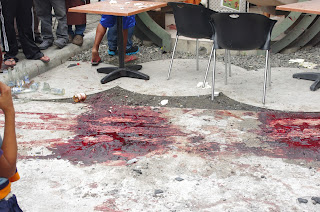 |
| Statue of Gov. Apolinar Velez on horseback |
In the early years of American occupation only few places in
the country had schools to serve the need of children aspiring to get higher
education. People from the provinces had to send their children for their
education to the capitals of the country. In that context only rich families
were capable to provide their children better education. Fortunately, the
Americans were more dedicated in improving the literacy of the Filipinos than
their Spanish predecessors. Education was the greatest legacy the Americans left
to the Filipinos. Under their administration they saw to it that children from
age 7 years and above should be in school and that free educational materials were
availed to them. The Americans also helped facilitate the establishments of
elementary, secondary and tertiary schools in different parts of the
Philippines.
In 1907, Don Apolinar Velez, one of the founding fathers of
Cagayan de Oro and the governor of Misamis Oriental thought of establishing a
secondary school in his native place so
that parents would not have to send their children either to Manila or Cebu to
study. He conveyed his proposal to the Philippine legislative assembly which
was headed by Speaker Sergio Osmeña of Cebu. During that time the Philippines
was one of the unincorporated territories of the United States. Filipinos were
given a semblance of autonomy by having all-Filipino elected members of the National
Assembly. Executive power however was vested to the American governor general
who was appointed by the President of the United States.
Don Apolinar’s effort
came into fruition when he was granted an audience by Governor General William
Cameron Forbes. The latter gave a green light to the plan. He told Don Apolinar
to secure a piece of land for the school that would include a large athletic
field which was a necessity since American school curriculum included sports.
 |
| The site of the school should include an athletic field |
The generosity of some people of Cagayan de Misamis now
Cagayan de Oro to donate their lands as the site of the school realized the
establishment of the Misamis Provincial High School which was also called Escuela Provincial.
The school was inaugurated on December 15, 1909 with no less than Governor
General William Cameron Forbes as the guest of honor. Other guests included Speaker
Sergio Osmeña and other dignitaries.
Classes formally
opened on January 10, 1910 with an all American faculty. The first principal
was the American Mr. Henry Smith. The last one who was American was Mr. William
Goodrich. Mr. Simeon Vale was the first Filipino to hold that office in 1928. Due
to the increasing number of students the intermediate grades were separated
from high school administration in 1926.
The periods of the Philippine Commonwealth, the Second World
War and the Philippine Independence saw the transformation of MOHS from an
American administered school into a Filipino administered one with its curriculum
attuned to the cultural, educational and other circumstances of young Filipino
personalities. On June 1, 1965 RA 4247 converted MOHS into a national high
school, and since then it has been known as Misamis Oriental General
Comprehensive High School or MOGCHS.
Cagayan de Oro as a highly urbanized city became administratively
independent from Misamis Oriental. The province however still keeps its seat of
government in the city. And it still owns some properties and institutions
inside the city. This includes MOHS which is presently called MOGCHS.
During the term of President Corazon Aquino a new 1987
Philippine Constitution provided for a compulsory and free education for all children at the
elementary and high school levels. The provision has benefited many Filipino
families specially the poor who could not afford to send their children to
private schools.
Today, it is easier even for poor families to enable their
children have elementary and high school educations because they are for free and schools
are widely available so that even barangays have their own national high
schools. Families belonging to middle class and the rich usually send their
children to private schools.
Being a public school, MOGCHS is a school for the
masses and for everyone who wishes to study there. Although the school is under the
administrative jurisdiction of the province of Misamis Oriental, it is in essence
a school for the people of Cagayan de Oro because most of its students are from
the city and that its location is in the heart of the city. MOGCHS and its
athletic field which is now the Pelaez Sports Center are not only pioneer institutions
of learning and sports in the city but they are also historical sites of
Cagayan de Oro and Misamis Oriental.































